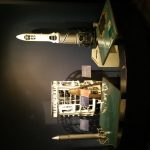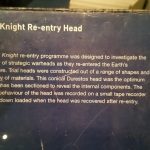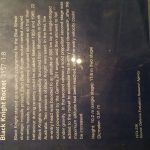The Black Knight Satellite

The Black Knight Satellite was first discovered in the year 1899 by the Inventor Nikola Tesla. He picked up a radio transmission that he believed to originate from Mars. In a letter to the Journalist Julian Hawthorne he referred to the signal as a message from another world, he could decipher only the beginning of the message 1.2.3.
The radio signal was picked up in 1927, by Jorgen Hals. Long delayed echoes (LDEs) are radio echoes which return to the sender several seconds after a radio transmission has occurred. Delays of longer than 2.7 seconds are considered LDEs.[1][2] LDEs have a number of proposed scientific origins.
These echoes were first observed in 1927 by civil engineer and amateur radio operator Jørgen Hals from his home near Oslo, Norway.[3] Hals had repeatedly observed an unexpected second radio echo with a significant time delay after the primary radio echo ended. Unable to account for this strange phenomenon, he wrote a letter to Norwegian physicist Carl Størmer, explaining the event:
At the end of the summer of 1927 I repeatedly heard signals from the Dutch short-wave transmitting station PCJJ at Eindhoven. At the same time as I heard these I also heard echoes. I heard the usual echo which goes round the Earth with an interval of about 1/7 of a second as well as a weaker echo about three seconds after the principal echo had gone. When the principal signal was especially strong, I suppose the amplitude for the last echo three seconds later, lay between 1/10 and 1/20 of the principal signal in strength. From where this echo comes I cannot say for the present, I can only confirm that I really heard it.[4]
Physicist Balthasar van der Pol[5] helped Hals and Stormer investigate the echoes, but due to the sporadic nature of the echo events and variations in time-delay, did not find a suitable explanation.[6]
Long delayed echoes have been heard sporadically from the first observations in 1927 and up to our time.
1957 The British Black Knight Rocket Program begins.
In 1961 The North American Aerospace Defense Command NORAD is turned on. Looking for Russian Nuclear missiles. There should be nothing up there except clear skies. The source of the signal is confirmed and the Satellite is now permanently tracked in a Polar Orbit. Using NORAD data The Black Knight Rocket program attempts to shoot it down. All attempts fail. It is later given the Moniker, Black Knight Satellite. An inside joke for the failed Black Knight Rockets.
1973 Duncan Lunan decodes the signal.
In 1973, in an article in Spaceflight, the magazine of the British Interplanetary Society (BIS), he said he had identified and deciphered a hidden radio message sent by an alien space probe[17] that had been caught but overlooked in the late 1920s by a collaboration of Norwegian and Dutch researchers who were studying the long delayed echo effect.[18] Published along with an accompanying editorial disclaimer, Lunan maintained that the putative message came from an object at the L5 point in the same orbit as the Moon, sent by the inhabitants of a planet orbiting Epsilon Boötis.
He came to the conclusion that the message was, “Start here. Our home is Upsilon Bootes, which is a double star. We live on the sixth planet of seven, coming from the sun, which is the larger of the two. Our sixth planet has one moon. Our fourth planet has three. Our first and third planets each have one. Our probe is in the position of Arcturus, known in our maps.”[19][20]
The claim was reported in Time[8] and the CBS Evening News.[21] It was included in Rod Serling‘s 1975 TV documentary In Search of Ancient Mysteries[22] and, many years later, on George Noory‘s Coast to Coast AM radio show.[23]
http://BlackKnightSatelliteMovie.com
![]()






This is an extremely good hints especially to those new to blogosphere, short
and exact advice… Thanks for sharing this one. A must read post.